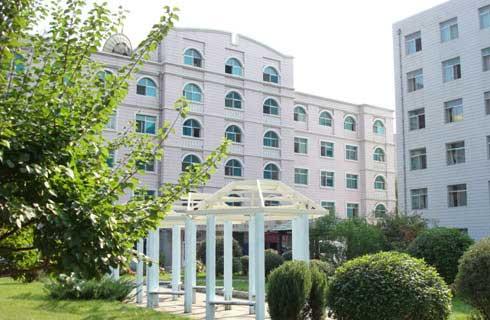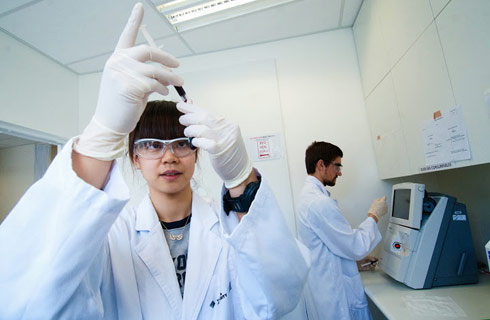Doctor of Philosophy in Civil Engineering- Computational Mechanics

学历文凭
Ph.D.

专业院系
Civil Engineering and Engineering Mechanics

开学时间

课程时长

课程学费

国际学生入学条件
The Master of Science (MS) degree is required for admission into the PhD and EngScD degree programs. A student who holds an appropriate bachelor's degree in engineering may apply for admission to either the MS only or MS leading to PhD program.
The following materials must accompany the online application for on-campus graduate programs-
Transcripts from every post-secondary institution attended
Three recommendation letters
Official Graduate Record Examination (GRE) General Test Scores
Personal statement
Resume or Curriculum Vitae
Publications (optional)
An interview may be requested
There are no minimum test score requirements to apply for admission consideration. However, it may be necessary to improve your English proficiency if you score:
TOEFL internet-based test - 99 or lower.
IELTS - 6.5 or lower.
IDP—雅思考试联合主办方

雅思考试总分
6.5
了解更多
雅思考试指南
- 雅思总分:6.5
- 托福网考总分:99
- 托福笔试总分:160
- 其他语言考试:PTE Academic - 68 or lower.
CRICOS代码:
申请截止日期: 请与IDP顾问联系以获取详细信息。
课程简介
相关申请
 预科
预科 奖学金
奖学金 实习机会
实习机会 在校学习
在校学习 跨境学习
跨境学习 校园授课-线上开始
校园授课-线上开始 在线/远程学习
在线/远程学习
学校排名

世界排名16
数据源:泰晤士高等教育世界大学排名
关于哥伦比亚大学

哥伦比亚大学的历届毕业生和教职员中累计共有97名诺贝尔奖得奖者,于世界各大学中排名第一。 申请哥伦比亚大学的学生人数在过去10年中翻了一番,最主要的原因只有一个:在所有常青藤盟校的校址中,曼哈顿完胜!哥伦比亚大学放任自己的学生在大苹果城中体验生活,但是,在他们承受不了生活压力时,哥伦比亚大学又会给他们提供避风塘。“One nice feature of the dorms is the view of the downtown skyline or the Hudson River.” 哥伦比亚大学每年会拿出1亿2千万美元用来满足所有大一新生的奖/助学金需求。国际生申请哥伦比亚大学需要提交2门SAT分项成绩。而去年被哥伦比亚大学录取的学生中50%的 SAT总分落在了2140-2330这个区间内。如果你想用ACT申请,请确保你的总分在32以上,另外还要提交writing成绩。
本校相关课程

Bachelor of Arts in Slavic Studies
学历文凭
Bachelor Degree
开学日期
课程费用总额


Bachelor of Arts in Russian Language and Culture
学历文凭
Bachelor Degree
开学日期
课程费用总额


Bachelor of Science in Computer Engineering
学历文凭
Bachelor Degree
开学日期
课程费用总额


机械工程学学士学位
学历文凭
Bachelor Degree
开学日期
课程费用总额


Bachelor of Science in Operations Research - Financial Engineering
学历文凭
Bachelor Degree
开学日期
课程费用总额


Bachelor of Science in Operations Research - Engineering Management Systems
学历文凭
Bachelor Degree
开学日期
课程费用总额

其他相关课程

机械工程哲学博士-计算科学与工程
 加州大学圣塔芭芭拉分校
加州大学圣塔芭芭拉分校学历文凭
Ph.D.
开学日期
课程费用总额


Bachelor of Science in Applied Mathematics
 佛罗里达州立大学
佛罗里达州立大学泰晤士高等教育世界大学排名:308
学历文凭
Bachelor Degree
开学日期
课程费用总额


Bachelor of Science in Computational Mathematics
 罗切斯特理工学院
罗切斯特理工学院泰晤士高等教育世界大学排名:711
学历文凭
Bachelor Degree
开学日期
课程费用总额


计算数学理学士学位(代托纳比奇校园)
 安柏瑞德航空大学
安柏瑞德航空大学学历文凭
Bachelor Degree
开学日期
课程费用总额


Bachelor of Science in Computational Modeling and Data Analytics
 弗吉尼亚理工大学
弗吉尼亚理工大学学历文凭
Bachelor Degree
开学日期
课程费用总额


数学科学与计算机科学学士学位
 麻省理工学院
麻省理工学院泰晤士高等教育世界大学排名:2
学历文凭
Bachelor Degree
开学日期
课程费用总额


























